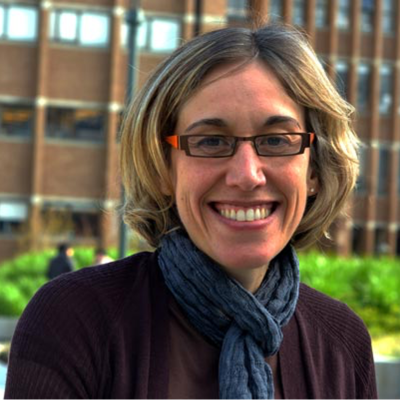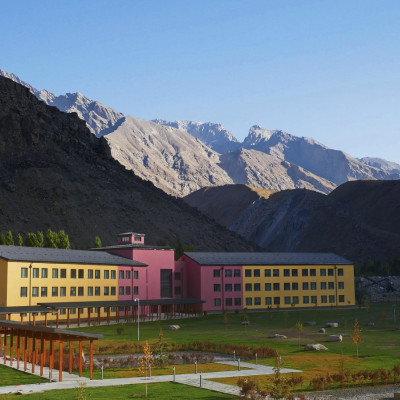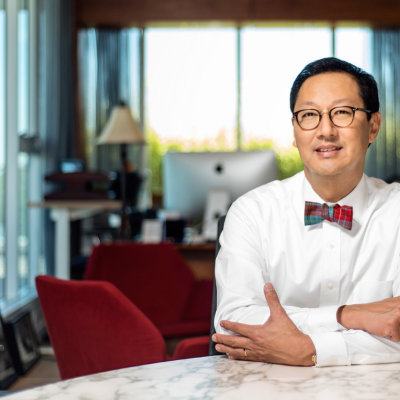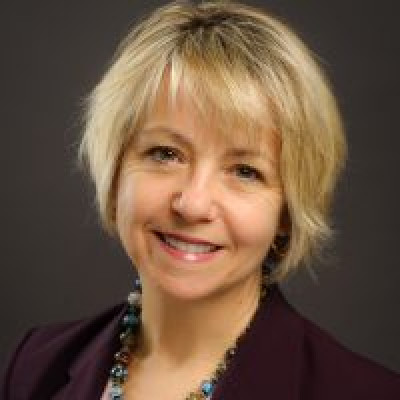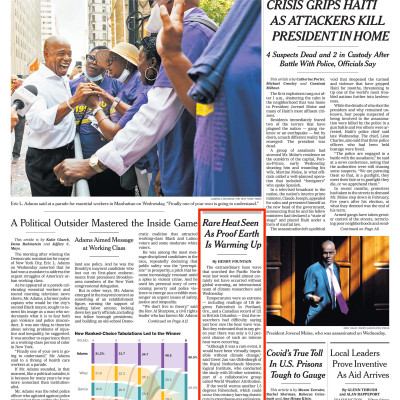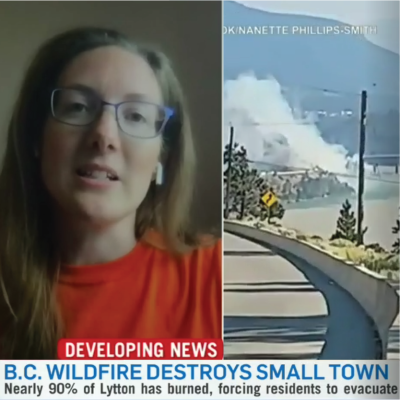News
Stay up-to-date with what's happening in EOAS
Meet Dr. Stephanie Waterman: Physical Oceanographer
Stephanie is a sea-going physical oceanographer. She is interested in large-scale circulation and the ocean's role in the climate system and the inter-relationships between various components of the oceanic circulations at different times.
She approaches her research both through observational & theoretical perspectives. She uses targeted field observations, observational data analysis, idealized process modeling, analytical analysis & lab studies. Her main aim is to observe real-world systems, identify the important physical processes generating individual phenomena, and reduce their complexity to a model which is useful.
She’s specifically interested in:
- Arctic oceanography, and the mixing of different types of waters in that ocean
- Southern ocean dynamics
- The role of “eddy fluxes” in the western boundary
- Geophysical fluid dynamics
EOAS develops the Earth & Environmental Sciences BSc for University of Central Asia
Francis Jones, Lecturer (geophysics and geoscience education)
In June 2021, the first cohort of Earth and Environmental Sciences students graduated at the Khorog, Tajikistan campus of the brand new University of Central Asia (UCA). See a description of this historic celebration including links to recorded speeches, and a photo gallery of the event.
Why is this graduation in far-away Tajikistan so meaningful?
UCA is an incredible, ambitious academic development project initiated in 2000 in three adjacent Central Asian nations. It is led by the Aga Khan Development Network and involves over 75 international partnerships, including UBC. UCA’s mission is to promote social and economic development in Central Asian mountain communities by offering an internationally recognized standard of higher education while enabling the peoples of the region to preserve their rich cultural and environmental heritage as assets for the future.
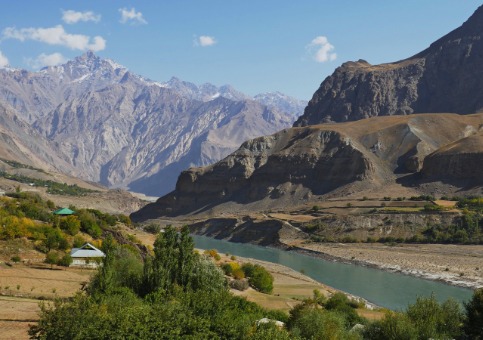
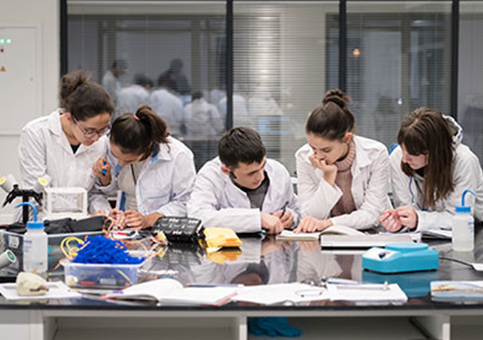
Tajikistan’s Pamir Mountains and students practice geoscience lab skills (photo: Francis Jones)
What’s the EOAS connection?
UCA came to EOAS to propose this partnership, we prepared the plan and budget, and then the team was hired, including UBC scientists and educational experts from EOAS, Geography, Physics, Chemistry, and Ecology. We are proud to have prepared all 22 core courses for this degree program. A project blog was kept while work progressed, and a presentation for International Mountain Day summarizes our goals and outcomes. The UBC Vice-Provost International also has a picture story entitled “From the ground up: helping build a new university’s undergrad program in Central Asia”.
In EOAS we worked with colleagues across disciplines and around the world to build courses for this mixed geography/geoscience BSc degree that are contextualized for mountainous Central Asia. Modern pedagogies were incorporated as UCA faculty all teach using evidence-based best practices. Therefore, we at UBC, and especially in EOAS, were particularly well-placed to contribute our experience in geoscience teaching, learning and educational development.
This remarkable project was a uniquely rewarding opportunity to learn about, and contribute towards the growth of higher education in mountainous Central Asia. So - congratulations to the first Earth and environmental scientists to graduate from the University of Central Asia! And thank you to all in EOAS, Geography, and beyond who contributed time, expertise and resources.
Watch the video to learn about the Earth and Environmental Sciences B.Sc. degree at UCA:
On Earth with Dr. Santa Ono - University President and Molecular Immunologist
Santa J. Ono, Ph.D., FRSC, FCAHS is the 15th President and Vice-Chancellor of the University of British Columbia. He also serves as Chair of the U15 Group of Universities, on the Board of Directors of Universities Canada, and as Past Chair of Research Universities of British Columbia. In 2018, he served as co-chair of the Tri-council advisory committee on equity, diversity and inclusion policy.
Prior to his appointment as President and Vice-Chancellor of UBC, Dr. Ono served as the 28th President of the University of Cincinnati and Senior Vice-Provost and Deputy to the Provost at Emory University. A molecular immunologist educated at the University of Chicago and McGill, Dr. Ono has taught at Johns Hopkins, Harvard University and University College London.
He holds Honorary Doctorates from Chiba University and the Vancouver School of Theology and is a recipient of the Reginald Wilson Diversity Leadership Award from the American Council on Education, the Professional Achievement Award from University of Chicago, a Grand Challenges Hero Award from UCLA and the NAAAP 100 Award from the National Association of Asian American Professionals.
On Earth with Dr. Bonnie Henry - Public Health Officer
Dr. Bonnie Henry was appointed as British Columbia’s Provincial Health Officer in 2018 following three years as the Deputy Provincial Health Officer. As BC’s most senior public health official, Dr. Henry is responsible for monitoring the health of all British Colombians and undertaking measures for disease prevention and control and health protection. Most recently Dr. Henry has led the province’s response on the COVID-19 pandemic and drug overdose emergency. Dr. Henry’s experience in public health, preventive medicine and global pandemics has extended throughout her career. She served in a number of senior roles at the BC Centre for Disease Control and Toronto Public Health, including as the operational lead in the response to the SARS outbreak in Toronto. She has worked internationally with the WHO/UNICEF polio eradication program in Pakistan and with the WHO to control the Ebola outbreak in Uganda and has been actively involved in mass gathering health planning in Canada and internationally. She is a specialist in public health and preventive medicine and is board certified in preventive medicine in the U.S. She graduated from Dalhousie Medical School, completed a Masters in Public Health and residency training in preventive medicine at University of California, San Diego and in community medicine at University of Toronto. She is an associate professor in the School of Population and Public Health at the University of British Columbia.
Heatwave paper co-authored by EOAS scientists made the N.Y. Times front page
Dr. Roland Stull, Dr. Rosie Howard, and Mr. Christopher Rodell from the Department of Earth, Ocean & Atmospheric Sciences are among the many co-authors on a World Weather Attribution (WWA) paper that made the front page of The New York Times on July 8, 2021. The complete N.Y. Times article can be found here.
According to the team of leading climate researchers, the extreme heatwave that happened very recently in parts of the US and Canada would have been “virtually impossible" without the influence of human-caused climate change, which made the heatwave at least 150 times more likely to happen.
Although the record-breaking temperature observations made it difficult to quantify how rare the heatwave is, the researchers concluded that the event would have been virtually impossible without human influence. The heatwave was about 2°C hotter than it would have been if it had occurred at the beginning of the industrial revolution when global mean temperatures were 1.2°C cooler than today. Looking into the future, an event like this would occur a lot less rare – almost every 5 to 10 years, if we continue living in a world with 2°C of global warming, which could be reached as early as the 2040s at current emission levels.
The researchers found two alternative explanations for how climate change made the extraordinary heat more likely. The first is that the event remains a very unusual event, albeit the aggravation of climate change. The other possible explanation is that nonlinear interactions in the climate have substantially increased the probability of such extreme heat, much beyond the gradual increase in heat extremes that has been observed up to now. This is a possibility that needs to be explored in future studies.
The study provides a strong warning that the rapidly warming climate is leading us into an unknown world that has significant impacts on our life, and that adaptation plans should be designed to prepare societies for a very different future.
The heatwave paper has been cited in over 3,300 news media articles around the world till July 12. A list of the media articles with links can be found here.
See below for the WWA article and the full study.
World Weather Attribution article: Western North American extreme heat virtually impossible without human-caused climate change
Full study, PDF version: Rapid attribution analysis of the extraordinary heatwave on the Pacific Coast of the US and Canada June 2021
Dr. Rachel White Interviewed on BC's Heat Dome
Dr. Rachel White, an assistant professor in the Department of Earth, Ocean & Atmospheric Sciences, researches climate change and atmospheric dynamics. A major focus of her work is studying how large-scale atmospheric dynamics contribute to extreme weather events such as heat waves and cold snaps.
Her expertise has made her a valuable contact for global news outlets reporting on the recent record-breaking temperatures in British Columbia over the last week. Times Radio in the UK interviewed her on the mechanics of the heat dome and its connection to climate change (interview starts at minute 8:30). The CBC published an interview on understanding the dangers high wet-bulb temperatures pose to human health, and The Globe and Mail on increasing baseline temperatures resulting in unusually hot nighttime temperatures. Catch Dr. White’s live interview on CTV News on the wildfires spreading through BC after the unprecedented heat wave. Check this page for updates as more of her interviews are published.
